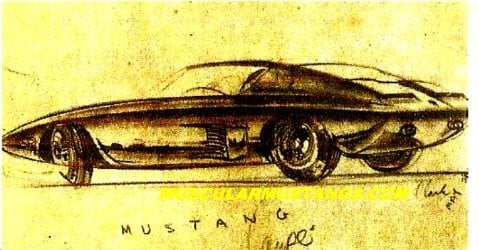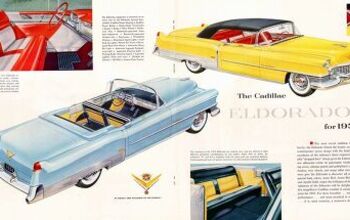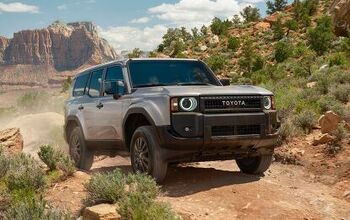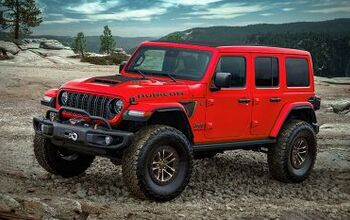No, The Ford Mustang Was Not Named After the SMU Football Team

After the University of Michigan and Southern Methodist University announced that their football teams will play against each other for only the second time ever, SMU issued a press release about what the school says is the role the first game back in 1963 had on automotive history. Essentially the school, whose sports teams are called the Mustangs, is claiming that Lee Iacocca named the Ford Mustang after their football team. Quote SMU:
Even though it was just one game, the 1963 game at Michigan plays a big part in SMU lore. Legend has it that when Ford Motor Company was preparing to introduce the sports car that would gain fame as the Mustang, it was considering other names such as Cougar, Bronco, Cheetah and Colt. But on Sept. 28, 1963, SMU took an undersized but quick team to Ann Arbor to play a massive Michigan Wolverine squad. Michigan gained the early advantage, but had to fight off the feisty Ponies for a 27-16 win.
The story continues that after the game, Ford’s Lee Iacocca entered the SMU locker room and addressed the disappointed Mustangs.
“Today,” Iacocca said, “After watching the SMU Mustangs play with such flair, we reached a decision. We will call our new car the Mustang. Because it will be light, like your team; It will be quick, like your team; And it will be sporty, like your team.”
Ford’s new car got its name, and the rest, as they say, is history.
History? The press release was closer to the truth when it used the words “lore” and “legend”.
There are lots of stories about how the Mustang got named. John Najjar, a Ford design executive said that he named the car for a World War II fighter plane, the P-51 Mustang and Ford has used that story in publicity materials, but Ford historian John Clor doesn’t put much stock in that PR. It seems, though, that a persuasive argument can be made that the name Mustang was first suggested by a young Ford stylist named Phil Clark, who also had a hand in designing the Mustang’s running pony emblem.
How the name was chosen might be unclear but it’s certain that by the time that football game was played, Iacocca and his team had committed to the name Mustang. Ford had been using the name since at least 1962 when they introduced what is now known as the Mustang I concept, a small four cylinder midengine sports roadster. In the video about the Mustang I’s development below, you can even see Clark working on the shape of the galloping mustang mascot.
As part of the publicity campaign leading up to the April 17, 1964 start of retail sales of the production Mustang, Ford introduced the Mustang II concept, based on a preproduction 1964 1/2 Mustang body shell, at the Watkins Glen racetrack on October 6, 1963, just two weeks after the SMU/UofM football game. Contractor Dearborn Steel Tubing had been working on the car since the summer so it’s not likely that the concept (or the production car) was named just days before the concept’s first public introduction.
Finally, there is photographic evidence. While the use of a Cougar emblem on what appears to be the Mustang II concept in a Ford styling photograph dated June 1963 shows that a final decision may not have been made by early summer, Nick Bunkley of the Automotive News reports that he was sent three photos of a Mustang prototype by Ford that are dated Sept. 27, 1963, the day before the football game of lore. The car in those photos has “Mustang” badging on the back and the famous pony mascot on the grille.
I suppose that SMU can be forgiven for embellishing their lore. SMU is in Texas. Texas is part of the West, and in the West, Sir, when legend becomes fact, you print the legend.
Ronnie Schreiber edits Cars In Depth, a realistic perspective on cars & car culture and the original 3D car site. If you found this post worthwhile, you can get a parallax view at Cars In Depth. If the 3D thing freaks you out, don’t worry, all the photo and video players in use at the site have mono options. Thanks for reading – RJS

Ronnie Schreiber edits Cars In Depth, the original 3D car site.
More by Ronnie Schreiber
Latest Car Reviews
Read moreLatest Product Reviews
Read moreRecent Comments
- VoGhost Oh, Mattie, I am BEGGING you to take a course in economics. There's probably a community college near you offering courses for free or very cheap. Seriously, people this ignorant of basic economics really should not be writing this drivel. Stick to what you know: pimping for big oil.
- 2manyvettes I was a computer instructor in a local technical college for some years teaching Windows OS and Micosoft Office. Not long before I retired I purchased a Mac Book Air laptop. It didn't take me long to learn the Apple OS and the first thing I learned was the lousy job Microsoft did ripping off the Apple software. I purchased Microsoft Office for Apple at the time and discovered when Apple upgraded the OS to 64 bit and my 32 bit Office software would no longer run on the laptop, that embedded in the Apple OS was software that could open any Office file and could save any file in Microsoft file format. I have always felt if Apple sold product at PC prices they would put Microsoft out of business. Oh, and I bought my Mac ten years ago and still runs like brand new. Effect on Rivian? Who knows? Based on my experience with their technology, it could be interesting.
- Spectator This was an amazing vehicle. Back then Acura knew how to make a plush and comfy seat!
- Syke F1 fan and normally watch every race, although most of them are DVR'd. I've got my Xfinity box set up to record everything automatically. This past Sunday I watched the race live for a change.
- Jalop1991 There is no inflation. Everything is cheaper than it was 5 years ago. SHRIMP AND GRITS!


































Comments
Join the conversation
Why do people keep referring to 64-1/2 Mustang? They were designated as 1965 models by Ford. The car appeared at dealers in spring of 1964 as a 1965 model.
The 65 Mustangs that were actually built in the 1965 production year verses ones built in 1964 were a little different as Ford made some considerable changes. So the 64 1/2 distinction was created to identify the very early made '65 models. These changes were mostly under the hood and to the electrical system, though there were some differences in the brake system, body panels and interior. The distinction is important to mechanics and someone restoring the car. There are no official manuals for 641/2 Mustangs and one has to often rely on manuals and diagrams for other Ford cars made during that time as official 65 Mustang manuals begin with information reflecting the cars made after the changes for 65. And to make it worse, it's unlikely to find two 64 1/2 Mustangs that are exactly alike as Ford was constantly altering things from paint to hardware along the assembly line in the beginning, often using parts intended for Fairlanes or Mercury Comets Etc. During restoration of an original 641/2 I purchased from the original owner, I had to make hard decisions wether or not to hang on to some original odd part or interior trim knowing that if I did I'd most likely lose points at any car show because of the lack of original documentation and official knowledge of it. The only reason one would seek to own a 641/2 model now would be because you simply want one of the first Mustangs ever made.